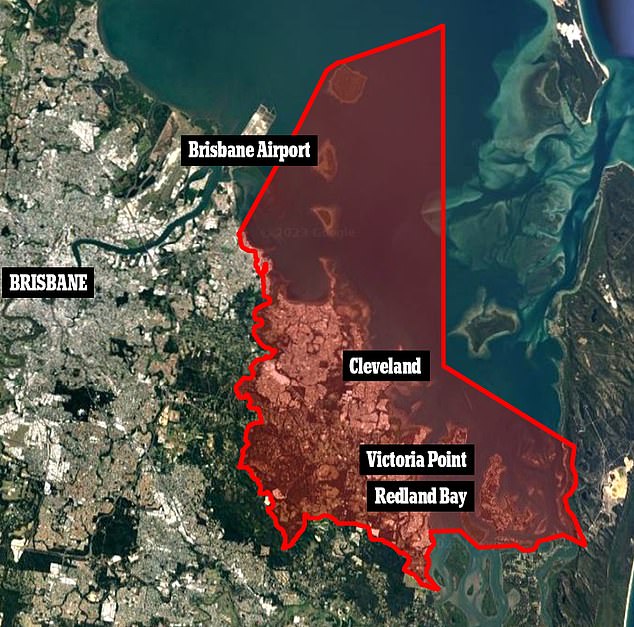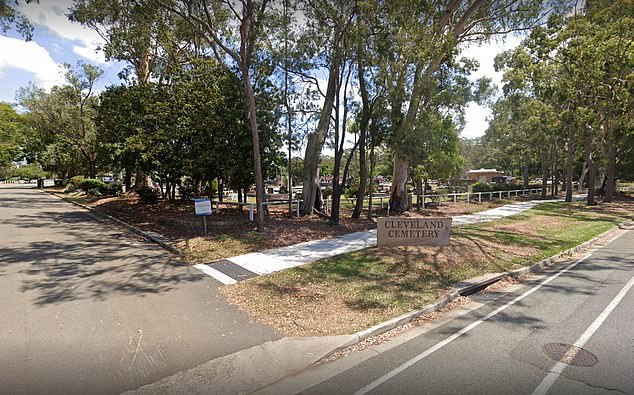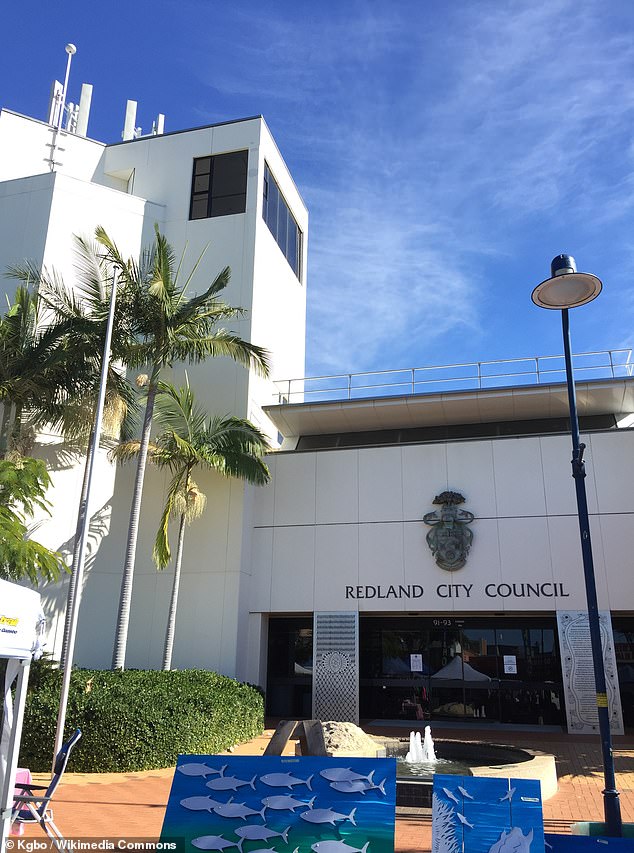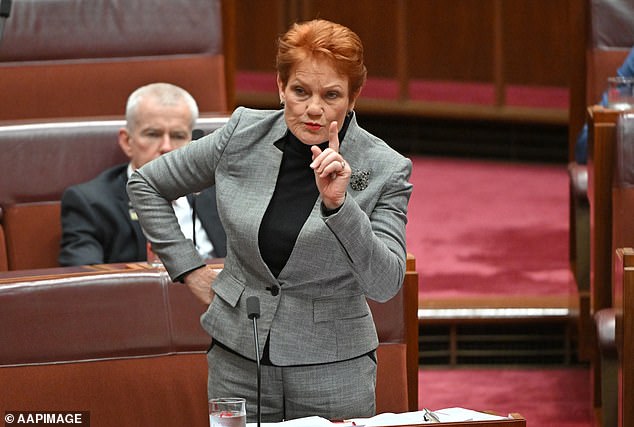Native title claim over Redlands coast in Brisbane casts doubt on ownership of urban public spaces and amenities across Australia
Australia’s first major claim to a major urban area clouds the future of popular nature reserves, parks, playgrounds, cemeteries and even municipal buildings.
The claim could result in native title rights to about 3,500 council-owned or managed properties in Brisbane’s Redlands coastal area, home to 165,000 people.
Redland City Council Mayor Karen Williams said the claim, which was filed in 2017 by the Quandamooka Yoolooburrabee Aboriginal Corporation, is a milestone that all Australians should pay attention to.
“It is the first time such a claim has been made on an urban area to such a large extent,” she told Daily Mail Australia on Thursday.
Scenic sites such as Wellington Point (pictured) could become exclusive areas for native title holders under the claim

The first major claim of native title was made on an urban area, the Redlands region of Brisbane, which has a population of 165,000
“Some of those areas we will defend vigorously because they are important, a very important part, such as in particular the coastal points and cemeteries where, I might add, many ancestors and pioneers are buried.”
Cr Williams said the claim could deprive locals and visitors of access to popular scenic and recreational spots, which could be transferred for the claimants’ exclusive use.
“We’re a coastal city, so we have Wellington Point, Victoria Point and Cleveland Point, where people go for a Sunday afternoon drive or to go fishing,” she said.
Despite native title claimants having access to millions in federal funding to pursue their claims, the council will have to rely entirely on its own resources if it takes the case to the Federal Court.
“It feels a bit like we’re on our own,” Cr Williams said.
“It is clear that there are costs that taxpayers must bear.
“We have island communities, marine parks and ferries and an aging population and not a very large commercial base, so we feel every penny we have to spend.”
Redland Council has extensive experience with native title after Stradbroke Island, which lies within the maritime boundaries, was transferred to Native Title in 2011.
Cr Williams said with native title ‘you can transfer the land or it can be compensation’.
“If you take North Stradbroke Island, the compensation is to partially transfer that land and give it to the traditional owners of the council estate, the caravan park,” she said.

Cleveland Cemetery is an area that Redland Council has committed to fighting for in the Federal Court

Redland City Council buildings are also part of the native title claim being decided by the Supreme Court
The case in the Federal Court comes after several years of negotiations, during which the list of municipal sites affected by the claim was reduced to 1,050 by the state government.
Claims to native title can be extinguished if there is a previous grant of title and/or previous public works – with the burden of proof on the council to prove this.
However, the state government did a U-turn and dumped all 3,500 sites owned or managed by the council back into the claim.
“It took us a few years to get to that point so that was a big disappointment for us,” Cr Williams said.
‘That’s where we decided to go to court.
“We are now doing everything we can, with a lot of time and resources, to collect that evidence (of public works) on 3,000 properties.”
In less developed coastal areas, the council will challenge native title by demonstrating that the sites have been reclaimed, but this means unearthing historical documents.
Cr Williams said uncertainty over sites subject to native title claims had hampered planning and major capital works.
“We obviously take into account which areas have native title to them because we don’t want to invest more taxpayer dollars into the landscape that may need to be transferred,” she said.
The mayor emphasized that the council ultimately wanted clarity on what was in the claim, which was made difficult by dealing with both state and federal authorities.
“We as an organization and council are absolutely committed to reconciliation,” she said.

Redland Mayor Karen Williams said it feels like the council is “on its own” in grappling with the claim

Queensland One Nation Senator Pauline Hanson said the native title battle over the councils was deeply unfair
“We agree with some of the areas where claims are made. All we are looking for is clarity and a level of honesty.”
A number of residents had raised concerns that the proposed Indigenous Voice to Parliament would make the council’s job more difficult, but Cr Williams insisted this was not the case.
“They think the referendum will have some input into the way this is managed, which it doesn’t,” she said.
“The Native Title Act is a pre-existing piece of legislation, whatever happens to the Voice, yes or no, we will still face this particular challenge.”
Cr Williams admitted the Voice could influence legislation in the future.
One Nation Senator Pauline Hanson stressed that what is happening in Redlands is “just the tip of the iceberg”.
“If we get the Voice to Parliament this will increase enormously,” she told Daily Mail Australia on Thursday.
In the more extensive documentation of the Uluru Statement from the Heart, which emerged from a 2017 convention, native title features prominently in the discussions.
A “roadmap” in the final document containing the declaration shows native title will become part of the body overseeing a treaty between First Nations and Australian governments.
“The role of the National Native Title Tribunal should be taken over by the Makarrata Commission,” it said.
Senator Hanson alleged that South Queensland Native Title Services was funded by the Albanian government to the tune of $71 million to assert claims to the Redlands region.
Meanwhile, a federal fund to help municipalities respond to indigenous property rights claims had been abolished by the Albanian government, she said, making it a very one-sided affair.
“There is no federal government funding for respondents to fight these claims,” Senator Hanson said.
‘Municipalities cannot afford that. I think it’s unfair, I think it’s unjust.’
Senator Hanson said she would table a motion to re-establish the fund and wanted a sunset clause setting a deadline for making native property claims.
Ms Hanson claimed native title already covers 50 per cent of Australia and a further 10 per cent has yet to be determined.
“I’ve seen the map of Queensland,” said Senator Hanson.
“They gave back the land around Hervey Bay, Fraser Island. Stradbroke Island.
“Claims have spread from Brisbane and the Gold Coast to Toowoomba and beyond Warwick. It also goes to the border.
“It’s also spread across Bundaberg, Maryborough, all the way through Emerald and all the way to Mt Isa.”
According to a 2019 report from the Native Title Tribunal, 40 percent of the continent had been claimed.
Senator Hanson said she is investigating the extent of Indigenous title claims across Australia and the funding provided for them.
“They will be looking for reparations, that’s what this is about,” she said.
“They basically gave this land back and it can’t do much for them because they’re selling it for a profit.
“It is wrong to simply hand these lands back to a handful of Aboriginal people and deny the enjoyment of these lands to the vast population of Australia.”
